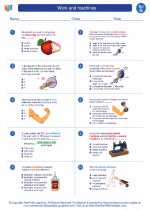Sexual Reproduction
Sexual reproduction is the process by which offspring are produced by the combination of genetic material from two parent organisms. This process involves the fusion of specialized reproductive cells called gametes, which results in genetic diversity in the offspring.
Key Concepts:
- Gametes: Gametes are specialized reproductive cells produced by organisms for the purpose of sexual reproduction. In humans, the male gamete is the sperm, and the female gamete is the egg.
- Fertilization: Fertilization is the fusion of the male and female gametes to form a zygote, which has a complete set of genetic instructions from both parents.
- Genetic Diversity: Sexual reproduction leads to genetic diversity in offspring because it involves the mixing and recombination of genetic material from two different individuals.
- Meiosis: Meiosis is the process by which gametes are produced. It involves two rounds of cell division, resulting in cells with half the number of chromosomes as the parent cell.
- Sexual Reproduction in Plants: In plants, sexual reproduction involves the production of pollen (male gametes) and ovules (female gametes), which are then transferred between flowers for fertilization to occur.
Study Guide:
Here are some key topics to focus on when studying sexual reproduction:
- Understand the process of meiosis and how it leads to the formation of gametes.
- Learn about the differences between asexual and sexual reproduction, and the advantages of sexual reproduction in terms of genetic diversity.
- Explore the various reproductive strategies in different organisms, including plants, animals, and fungi.
- Investigate the role of sexual reproduction in evolution and adaptation.
- Review the stages of fertilization and the formation of a zygote.
By mastering these key concepts and topics, you will have a solid understanding of sexual reproduction and its significance in the natural world.
.





